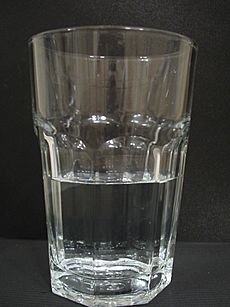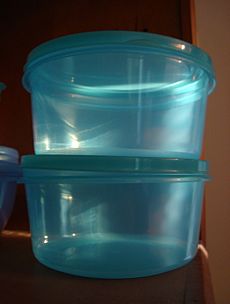Transparency facts for kids
Transparency is a special quality of some materials. It means they let light pass right through them. If something is transparent, you can see clearly through it, just like looking through a window. What's on the other side looks almost the same as if nothing was there.
Sometimes, a transparent object can act like a lens. This means it might change how big or small things look, or even change their shape. The opposite of being transparent is being opaque. Opaque materials block light completely, so you can't see through them at all.
Some animals are transparent, like a jellyfish. This helps them hide from predators because they blend in with their surroundings. It's harder to see them, especially in places where there isn't much light.
What is Translucency?
If a material is translucent, it means some light can pass through it, but you can't see clearly through it. Think of it like looking through frosted glass. You can tell there's light on the other side, but you can't see the details of what's there.
When light hits a translucent object, the light gets scattered around. This is why you might only see a shadow or a blurry shape, instead of a clear picture.
Some common examples of translucent materials include frosted glass, certain types of paper, and some kinds of amber.




